Class 10 Exam > Class 10 Notes > Physics for GCSE/IGCSE > Current
Current | Physics for GCSE/IGCSE - Class 10 PDF Download
| Table of contents |

|
| Current |

|
| Direct & Alternating Current |

|
| Measuring Current |

|
| Types of Ammeters |

|
| Reading Analog and Digital Meters |

|
| Electrical Conduction in Metals |

|
| Conventional Current |

|
Current
- The current refers to the amount of charge that flows through a point in a circuit per second.
- It is helpful to envision current as the amount of charge passing through a specific point in a circuit in one second.
- The relationship between charge, current, and time is defined by the following equation:

- Where the symbols:
- The symbol Q represents charge, measured in coulombs (C).
- The symbol I represents current, measured in amperes (A).
- You can rearrange this equation with the help of the formula triangle:

Direct & Alternating Current
- When two oppositely charged conductors are connected together (by a length of wire), charge will flow between the two conductors.

- The movement of charge is referred to as electric current.
- A higher rate of charge movement corresponds to a stronger electric current.
Direct Current and Alternating Current
- Current can be direct current (dc) or alternating current (ac).
- In terms of calculations, they can be treated in the same way.
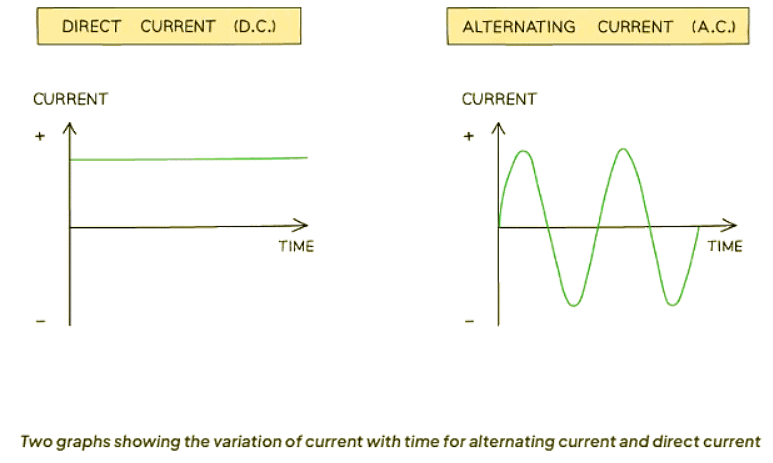
Direct Current (dc)
- Direct current is produced when using dry cells and batteries (and sometimes generators, although these are usually AC)
- The electrons flow in one direction only, from the negative terminal to the positive terminal
Alternating Current (AC)
- Alternating current typically comes from mains electricity and generators
- It is needed for use in transformers in the National Grid (covered later in this topic)
- The direction of electron flow changes direction regularly
- A typical frequency for the reversal of AC current in mains electricity is 50 Hz
Question for CurrentTry yourself: What is the unit of current?View Solution
Measuring Current
- Current is measured using a device called an ammeter.
- An ammeter must be connected in series with the part of the circuit you intend to measure the current through.
- Ammeters gauge the amount of charge moving through them per unit time, necessitating that they are in series to measure all the charge.
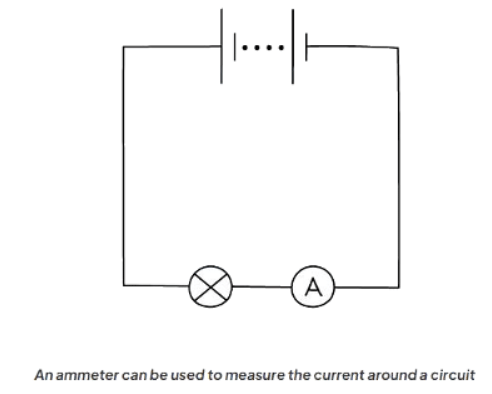
Types of Ammeters
- Ammeters can be categorized as either Digital (featuring an electronic readout) or Analogue (with a needle and scale).
- Digital ammeters display readings electronically, while analogue ammeters use a needle and scale for measurement.
Analogue Ammeters
Analogue ammeters have specific characteristics:
- Typical ranges for analogue ammeters are 0.1-1.0 A and 1.0-5.0 A.
- Before conducting an experiment, always ensure the marker is at zero; if not, adjust your measurements accordingly.
- Prior to use, verify analogue ammeters for zero errors.
- Analogue ammeters are prone to parallax error; hence, readings should be taken directly perpendicular to the scale.
Reading Analog and Digital Meters
- Always approach the meter from a position directly perpendicular to the scale.

Digital Ammeters
- Digital ammeters are capable of measuring very small currents, often in milliamperes (mA) or microamperes (µA).
- Digital displays provide precise values, making them easy to use. However, they may exhibit slight fluctuations between readings.
- Users should ensure zero error by verifying that the reading is zero before commencing an experiment. If not, the 'zero' value must be subtracted from the final results.
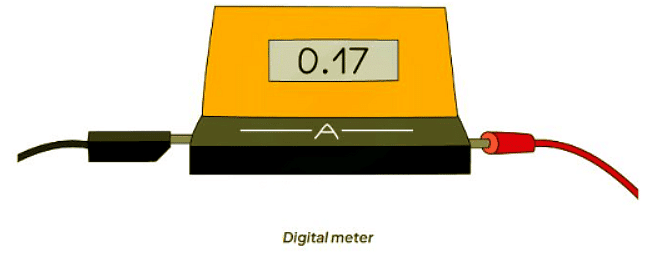
Question for CurrentTry yourself: What is the purpose of connecting an ammeter in series with the part of the circuit you intend to measure the current through?View Solution
Electrical Conduction in Metals
In metals, electrons move freely, causing current
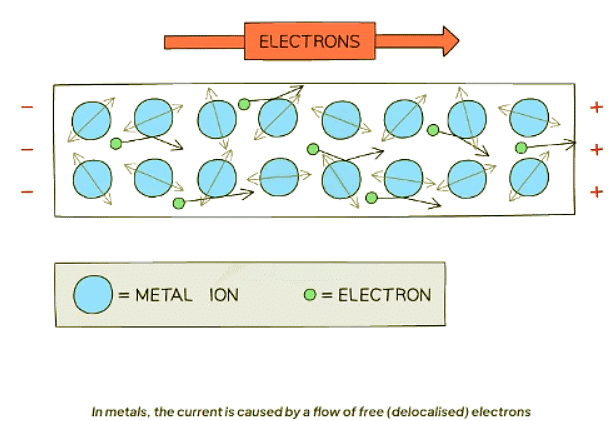
Conventional Current
- Electrons are negatively charged
- This means that the electrons flow from negative to positive
- Conventional current, however, is still defined as going from positive to negative
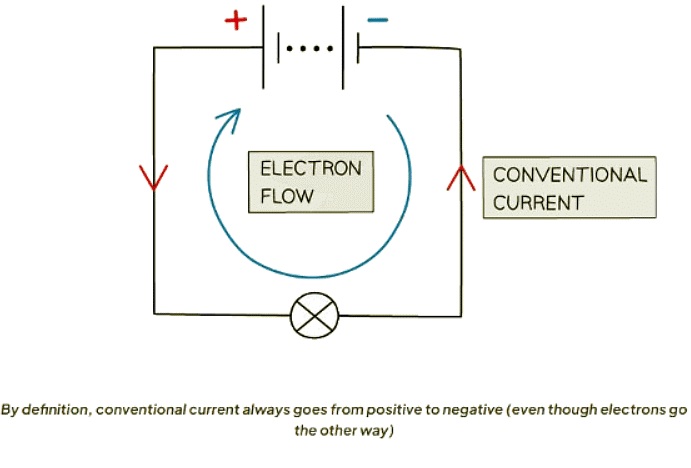
The document Current | Physics for GCSE/IGCSE - Class 10 is a part of the Class 10 Course Physics for GCSE/IGCSE.
All you need of Class 10 at this link: Class 10
|
126 videos|182 docs|35 tests
|
FAQs on Current - Physics for GCSE/IGCSE - Class 10
| 1. What is the difference between direct and alternating current? |  |
Ans. Direct current (DC) flows in one direction continuously, while alternating current (AC) changes direction periodically.
| 2. How do we measure current in a circuit? |  |
Ans. Current is measured using an ammeter, which is connected in series with the circuit to measure the flow of electrons.
| 3. What are the types of ammeters commonly used in electrical circuits? |  |
Ans. The two main types of ammeters are analog ammeters, which have a needle that moves across a scale, and digital ammeters, which display the current value numerically.
| 4. How do we read analog and digital meters to determine the current in a circuit? |  |
Ans. For analog meters, the current is read where the needle points on the scale. For digital meters, the current value is displayed digitally for easy reading.
| 5. What is conventional current and how does it relate to the flow of electrons in a circuit? |  |
Ans. Conventional current is the flow of positive charge from the positive terminal of a source to the negative terminal. In reality, electrons flow in the opposite direction, from negative to positive.
Related Searches



















